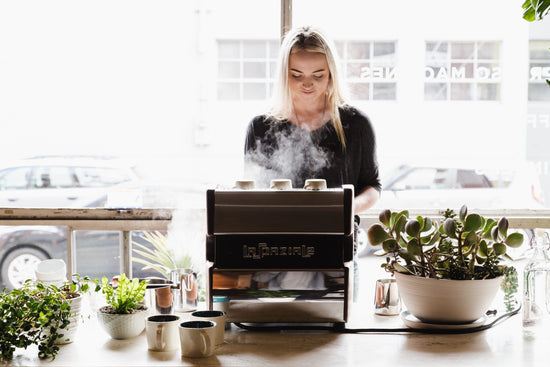How to Steam Milk

Great milk is the key to truly having café quality drinks at home. It takes a lot of practice and terrific technique to get to repeatable results every time. However, we have found that with the right training, folks can get very good within a couple of weeks.
Here is one of our in-house baristas, Charles, with a brief tutorial on steaming great milk:
For a latte, cortado or macchiato you want to produce milk that mimics the consistency of house paint – thick, smooth and creamy, not foamy like a bubble bath. A little extra aeration will provide denser foam for a cappuccino. Well-steamed milk will have a uniform texture, a glossy shine on the surface and nice sweet flavor that will support and complement the qualities in your espresso. Whole milk works best with these techniques, but through plenty of testing, we've found some great dairy alternatives that steam just like the real thing!
Quick Tips:
- Start with cold milk.
- Purge the steam wand.
- Keep the pitcher straight.
- Partially submerge steam tip about half-way between the center and side of the pitcher.
- Introduce air with circular milk motion and a "psst, psst" sound until the pitcher is room temperature.
- At room temperature, submerge the tip fully and keep the vortex going in the pitcher.
- When the pitcher is hot to the touch, turn off the steam and remove the steam wand from the milk.
- Immediately wipe the wand and purge.
- Gently swirl the milk and give the pitcher a couple taps against the counter to remove any large bubbles.
- Pour into wonderful art (after plenty of practice).
Want to become even more of a master in front of your machine? Check out our Latte Art article to learn how to pour a heart or learn how to Pull the Perfect Shot of Espresso. Or for more thorough, in-depth training, check out Intro to Milk Steaming and Latte Art now available through Coffee School.